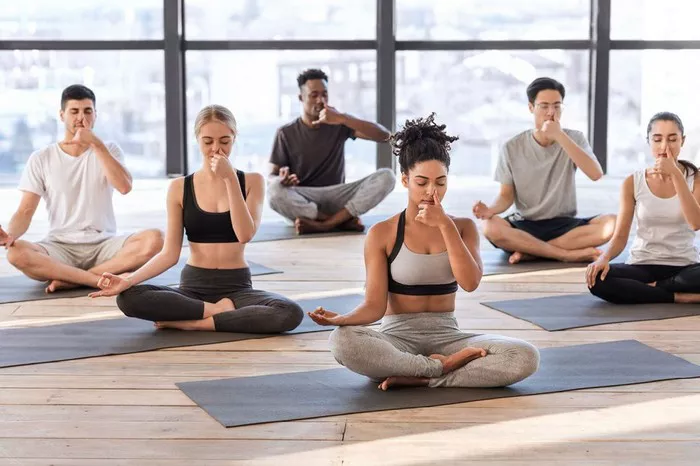Restorative yoga is often hailed as a practice of profound relaxation, one that offers a sanctuary of calm in a hectic world. It focuses on stillness, mindfulness, and the gentle release of tension. However, some practitioners report feeling unusually tired after a session, which may seem counterintuitive given the restful nature of this style of yoga. So, can restorative yoga make you tired? The short answer is yes, but this fatigue is usually a healthy and temporary phenomenon, indicating the body’s deep need for rest and recalibration.
In this article, we will explore restorative yoga in depth, understanding why it might leave you feeling tired and how this effect fits into the broader context of wellness and healing.
What Is Restorative Yoga?
Restorative yoga is a gentle practice designed to promote relaxation and healing. Unlike more vigorous forms of yoga that emphasize strength or flexibility, restorative yoga focuses on slowing down, reducing stress, and resetting the nervous system.
Key Characteristics of Restorative Yoga:
Support with Props: Practitioners use props like bolsters, blankets, blocks, and straps to fully support the body in each pose.
Prolonged Poses: Poses are typically held for 5–20 minutes, allowing the body to sink into a state of deep relaxation.
Minimal Effort: Unlike active yoga styles, restorative yoga involves little to no muscle engagement. The body is encouraged to release and soften completely.
Focus on Breath and Stillness: Conscious breathing and mindfulness are integral to the practice, helping calm the mind and nervous system.
Common poses include supported child’s pose, reclined bound angle pose, and legs-up-the-wall pose, each aimed at relieving tension and promoting relaxation.
Why Might Restorative Yoga Make You Tired?
Feeling tired after restorative yoga is not uncommon, and it often stems from the practice’s impact on your nervous system and overall physical state. Here’s a closer look at the possible reasons:
1. Deep Nervous System Reset
Restorative yoga works primarily on the parasympathetic nervous system (PNS), also known as the “rest and digest” system. In our busy lives, many of us operate in a constant state of heightened alertness due to chronic stress, which activates the sympathetic nervous system (SNS), or “fight or flight” response.
By encouraging deep relaxation, restorative yoga:
- Shifts the body into PNS dominance, which helps counteract stress and promote healing.
- Releases cortisol and adrenaline that may have accumulated in response to stress.
This switch can leave you feeling tired because your body is shifting from a state of heightened energy to one of recovery. It’s similar to how you feel after finally relaxing following a stressful period—you might feel an overwhelming need to rest as your body processes the accumulated tension.
2. Emotional Release
Restorative yoga often leads to the release of pent-up emotions. Holding poses for extended periods in a safe and supported environment allows deep-seated emotions to surface, such as grief, sadness, or frustration. This emotional processing can be physically and mentally draining, leaving you feeling fatigued after a session.
3. Physical Recovery
Even though restorative yoga is gentle, it facilitates profound physiological changes:
Releasing muscle tension: Chronic tension in the muscles can be exhausting to maintain. When these areas finally relax, you might feel drained.
Improving circulation: Restorative poses enhance blood flow, particularly to the organs and brain. This improved circulation can cause a temporary drop in energy levels as the body redistributes resources for recovery and healing.
4. Accumulated Sleep Debt
Restorative yoga provides a window for your body to acknowledge its true state of exhaustion. Many people operate on chronic sleep deficits, masking their fatigue with caffeine or adrenaline. Restorative yoga removes these distractions and highlights the need for rest. If you feel tired afterward, it’s likely your body signaling that it needs more rest than you’ve been allowing it.
5. Energetic Shifts
From a yogic perspective, restorative yoga can create shifts in the body’s energy, or prana. By releasing blockages and restoring balance to the subtle energy body, you might experience sensations of tiredness as your system recalibrates. This is often temporary and paves the way for greater vitality in the long term.
Is This Fatigue Normal?
Yes, post-yoga fatigue is normal, especially for those new to restorative yoga or those practicing during a stressful period. It’s a sign that the body is responding to the practice and beginning to heal. However, persistent or excessive fatigue may warrant further investigation into underlying factors, such as:
- Poor sleep quality or quantity.
- Chronic stress or burnout.
- Nutritional deficiencies, such as low iron or B vitamins.
- Underlying health conditions.
If the fatigue persists or feels overwhelming, consulting a healthcare professional is a wise step.
How to Manage Fatigue After Restorative Yoga
If you find yourself feeling tired after a restorative yoga session, there are steps you can take to support your body and mind:
1. Honor Your Need for Rest
Listen to your body and allow yourself to rest if needed. A nap, a quiet evening, or simply sitting with a cup of tea can help your body integrate the benefits of the practice.
2. Stay Hydrated
Gentle movement and enhanced circulation during restorative yoga can stimulate detoxification. Drinking water or herbal tea can help support this process.
3. Nourish Your Body
A light, nourishing meal or snack after your session can replenish your energy levels. Focus on whole foods like fruits, vegetables, nuts, and seeds.
4. Transition Slowly
If possible, avoid rushing into a busy schedule immediately after your session. Allow for a buffer of quiet time to ease back into your day.
5. Consistency is Key
With regular practice, your body may adapt to restorative yoga, reducing the intensity of fatigue over time. Aim to incorporate it into your routine weekly for sustained benefits.
The Long-Term Benefits of Restorative Yoga
While restorative yoga may initially leave you feeling tired, it offers profound long-term benefits:
Reduced Stress: By activating the parasympathetic nervous system, restorative yoga helps decrease overall stress levels.
Improved Sleep: Regular practice can enhance sleep quality by training the body and mind to relax more easily.
Enhanced Recovery: Restorative yoga supports the body’s natural healing processes, making it a valuable complement to more active forms of exercise.
Increased Mindfulness: The meditative aspect of restorative yoga fosters a deeper connection to the present moment, which can improve mental clarity and emotional resilience.
Over time, these benefits outweigh any temporary fatigue, leaving you feeling more balanced and energized in daily life.
Conclusion
Restorative yoga can indeed make you feel tired, but this tiredness is generally a sign of the body’s healing and recalibration. It reflects the release of physical tension, emotional burdens, and accumulated stress. By listening to your body and honoring its need for rest, you can use this practice as a powerful tool for long-term well-being.
Remember, the goal of restorative yoga is not just relaxation but restoration—of your energy, balance, and inner harmony. Feeling tired is a natural part of that journey, one that leads to greater vitality and peace over time. Embrace it as a sign that your body is doing exactly what it needs to do: heal.
Related Topics:



















